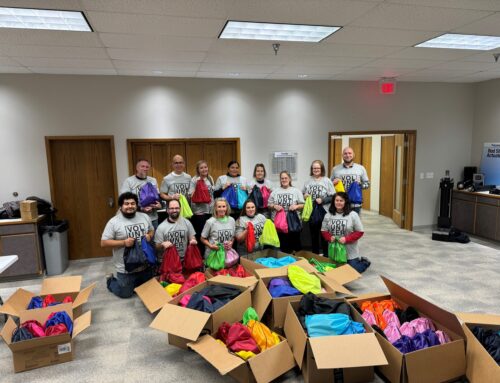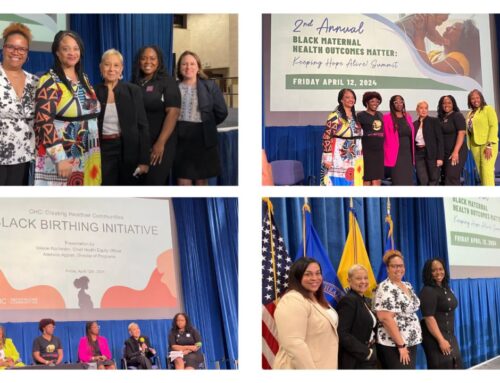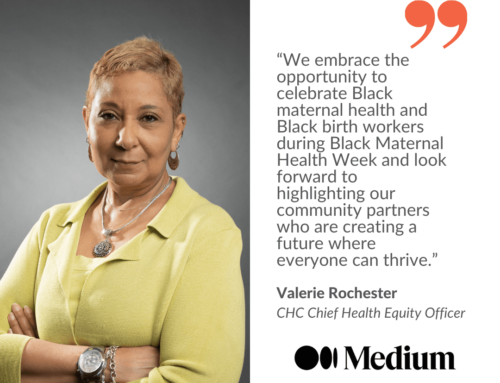By: Thomas G. Bognanno, President and CEO for CHC;
How COVID-19 Might Alter the Nonprofit Landscape and How Your Organization Can Survive
– A recent poll of more than 500 nonprofit organizations conducted by the Charities Aid Foundation of America found that 96.5 percent stated COVID-19 negatively impacted their organization while 97.4 percent project a decrease in their funding in the next 12 months. Many have closed their offices, eliminated staff positions, moved employees to virtual work modes, and had to drastically alter their regular programmatic work. We’ve found similar results at Community Health Charities, surveying our nearly 2,000 partner nonprofits who have seen more than half a billion dollars in losses this year.
While the immediate problem is an organization’s inability to provide services to community members in need, the more long-term issue is more worrisome: nonprofit sustainability.
Why does this matter? Because the nonprofit sector, employing 12.3 million paid individuals, is the third largest workforce of any U.S. industry, behind only retail trade and accommodation and food service. Despite being the third largest generator of payroll income in the United States, a 2018 report on the financial health of nonprofits in the U.S. showed that less than half of nonprofits have one month of operating reserves and less than six months of cash to keep them running.
Thus, the one sector meant to help in times of trouble, hardship and disaster is not financially positioned to be able to absorb any fiscal disruptions caused by those same disasters.
Over the course of my nearly 40-year career in the nonprofit industry, I have learned a few things about sustainability that I believe will help organizations weather the burden of this year’s pandemic and resulting unemployment and other issues as well as other disasters that may befall this vital sector.
Rethink Your Revenue Reach
One of the primary sources of revenue for nonprofits are fundraising events. With many nonprofits cancelling major in-person events and fundraisers, seeing revenue declines and experiencing unprecedented changes, proven virtual fundraising methods like workplace giving may be an even more important revenue source this year. With many employees working remotely, online workplace giving campaigns could become one of the primary channels of reaching donors.
Workplace giving raises billions of dollars for nonprofits every year, reaching numerous donors through one campaign, whether that’s Combined Federal Campaign (CFC), private sector company campaigns, or public sector and state campaigns. Community Health Charities (CHC) participates in more than 1,000 campaigns annually, raising resources for our nonprofit partners. We even have our own workplace giving platform. In the past five years, we’ve raised more than $330 million for our nonprofit partners, and $1 billion through the CFC since its inception. Not a partner? Reach out to us.
Cultivate Donors on New Channels
Many nonprofits have pivoted to a more cultivational mode of communications, keeping donors informed about activities and programs while finding new approaches to engage them. This is especially true with the use of social media. Nonprofits have had to improvise and start doing things like Facebook Live streams from their homes, sharing stories of how remote work has altered the way they deliver on their mission, and being transparent about how the pandemic has impacted the bottom line. Zoom sessions have become the new highway to share helpful information and education seminars, while still connecting with donors in a personal and authentic way. Fundraising has increased on Facebook and Instagram due to the stay-at-home directives as donors are using these platforms now more than usual. Knowing this, smart nonprofits can connect with donors where they are, when they want, on the devices they are using.
Consider Collaboration or Consolidation
For many nonprofits, survival may require collaboration or even consolidations, previously not considered during the years of plenty. I have led two major national nonprofit consolidation efforts in my career. Most recently, in 2009, CHC consolidated our backroom operations for more than 40 state affiliates. Taking advantage of economies of scale made us more efficient and increased our programmatic impact, with far more robust systems and capabilities post-consolidation than individual affiliates ever could have afforded or managed on their own. Shared staff allowed for more stringent controls, increasing oversight and accountability even for our smallest offices.
By quickly building a nationwide infrastructure, we reduced overhead by approximately 60 percent – all while still managing the same workload. Making these changes proactively providing 18 months of operating reserves and with it, greater freedom to innovate, diversify, and adapt to the changing landscape. In the last few years, we’ve also acquired four other federations—groups that came to us for our technological and fundraising expertise and financial strength, to help them continue their missions when they were no longer able to do so. Similarly, nonprofits may find they don’t need the expense of as many physical office locations, with staff working remote across the country. This too could provide cost savings, such as offering each other shared office or meeting space.
Learn from Past Experiences
Although COVID-19 and a global pandemic are new for most of us, running an organization during a financial crisis is not. Look at what you or organization have done in the past to survive and thrive during tough times.
Although the knee-jerk reaction may be layoffs, see how you can adjust your budget, shift funding priorities, and innovate. While reviewing what’s worked for you in the past, don’t be afraid to incorporate and test new ideas as well.
Reflection
The immediate and long-term impacts of the coronavirus on the nonprofit landscape are nothing to belittle. However, I am confident that organizations can not only survive, but thrive, post-COVID – if leadership is willing to accept operational changes. It will require us to band together in unpredictable ways and with unanticipated partners, but the results, if done correctly, will be increased efficiency and fiscal sustainability for the nonprofit sector as a whole. And that may be what it takes to create an even greater social impact for all.
If this seems an impossible feat for your organization, already running on shoestring budgets and a skeleton staff, then be sure to read my Forbes’ posts: How Nonprofits Of All Sizes Can Leverage Technology For Low To No Cost and Five Revenue Streams To Boost Fundraising After A Down Year.
Lastly, reach out to me, or my team at info@healthcharities.org, for help with fundraising strategies, workplace giving, consolidation, or other solutions. We’ve done it before. We can do it again.

Thomas G. Bognanno, President and CEO for CHC
Thomas G. Bognanno has been the President and CEO of Community Health Charities since January 2006. Prior to that, Tom had a distinguished 20-year career with the American Diabetes Association (ADA), where he served as the Chief Field Officer. He was instrumental in revitalizing ADA’s community-level infrastructure and acting as one of the chief architects of the Everyday Choices for a Healthier Life partnership between ADA, the American Heart Association, and the American Cancer Society. Before ADA, Tom spent six years with the American Cancer Society.
At Community Health Charities, Tom has been a catalyst for consolidating the organization and creating a new direction for its more than 2,000 charity partners nationwide and its network of over 17 million caring employees. Under Tom’s leadership, Community Health Charities evolved its mission to empower people to take action to improve health and wellbeing to build stronger, healthier communities. Community Health Charities supports education, treatment, and prevention for those with health challenges; brings organizations together to improve community health; provides individuals with opportunities to get involved; and increases the capacity of nonprofit organizations.
Residing in northern Virginia, Tom and his wife Suzan have been married for over 35 years and have raised three children.







